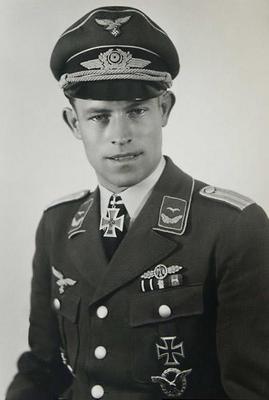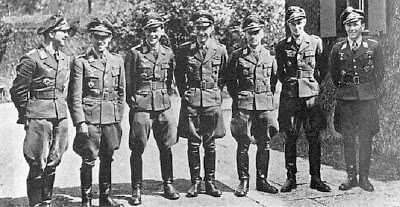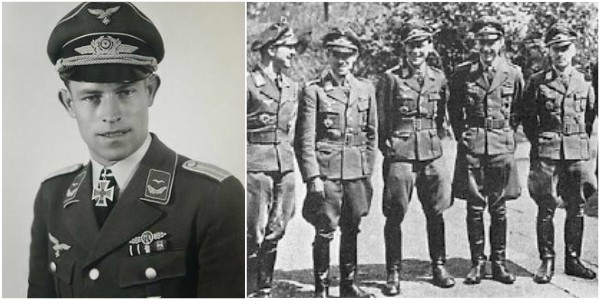Heinrich Ehrler was born on 14 September 1917 in Oberbalbach, Germany. He grew up in the Weimar Republic and Third Reich in a family of 12 children. Following a vocational education as a butcher, Ehrler joined the Wehrmacht in October 1935. Initially, he served with the artillery and anti-aircraft artillery. He participated in the Spanish Civil War as part of the Condor Legion, supporting the Spanish Nationalists. Following the outbreak of World War II, he requested a transfer to the Luftwaffe.
He scored his first victory in May 1940 in Norway, as part of Jagdgeschwader 77, later restructured as JG 5 and was awarded the Iron Cross 2nd Class. A year later, in September 1942, he was awarded the Knight’s Cross of the Iron Cross for 64 aerial victories. By June the following year, the 27-years-old Group Commander’s tally rose to a hundred, becoming the 40th Luftwaffe pilot to reach the mark.

On 25 May 1944, he achieved nine victories in one day, bringing his tally up to 155. In August, he was appointed to Wing Commander of JG 5 and at the same time was promoted to Major. His rise seemed unstoppable.
On 12 November that year, Ehrler was tasked with protecting the battleship Tirpitz when he received a message reporting inbound British bombers. He hurried to intercept the enemy but was too late. The British Lancasters sank the Tirpitz and its thousand sailors. Ehrler was accused by ground control of attempting to get his 200th victory instead of leading his fighters.
Scapegoated for the loss of the battleship, Ehrler – who had been nominated for the prestigious Knight’s Cross of the Iron Cross with Oak Leaves and Swords prior to the disaster – was court-martialed, stripped of his command and sentenced to three years and two months of honorable imprisonment. Further investigation proved that the reason for the failure was poor communication between the Kriegsmarine and the Luftwaffe. Proven innocent, Ehrler’s sentence was commuted and his loss of rank rescinded. In February 1945, he was reinstated and transferred to JG 7.

According to his fellow pilots, Ehrler thereafter flew in the increasingly desperate air battles without the purpose and dedication that had made him one of the Luftwaffe’s most successful aces. On 4 April 1945, during the Defense of the Reich campaign, he was to fly his final mission.
Ehrler managed to shoot down two Allied bombers for his final two victories, before running out of ammunition. In a split second, he decided to destroy the third by ramming into it. In his last transmission over the Squadron Radio Network Ehrler told his comrade: ‘Theo, I have run out of ammunition. I’m going to ram this one. Goodbye. We’ll see each other in Valhalla.’
Heinrich Ehrler is credited with 208 aerial victories in over 400 combat missions, 10 of which were on the Western Front. He remains the 10th most successful flying ace of all times.
